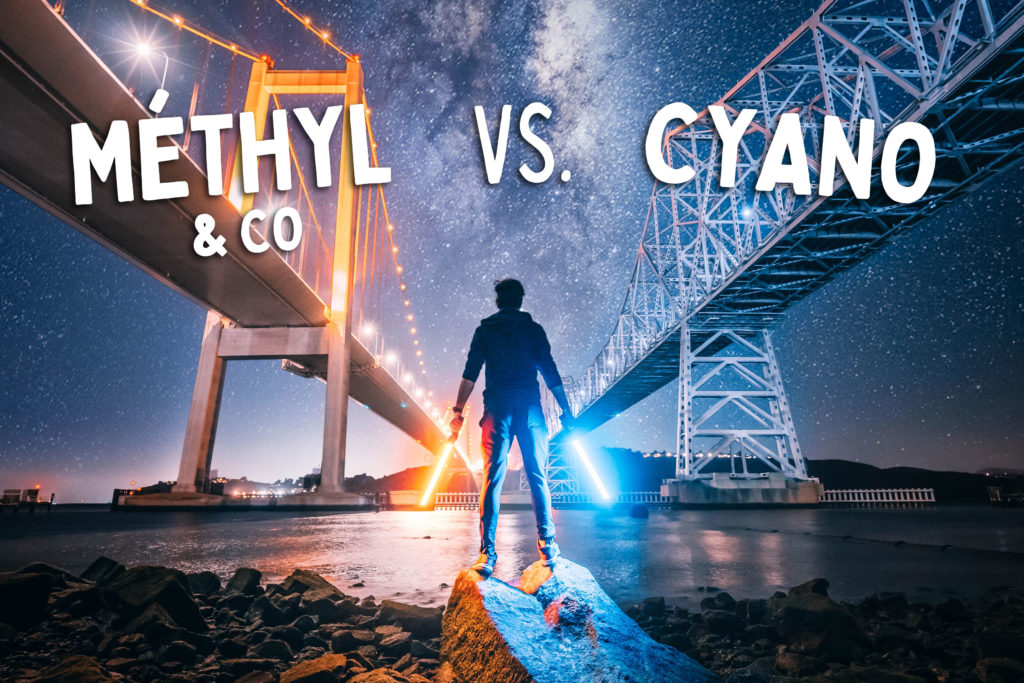Cyanocobalamin VS Hydroxo/Methyl/Adenosyl-cobalamin, the war of the B12 vitamins
Reading time: 5 minutes | Written with love by: Jérémie
Since vitamin B12 is essential for the good health of vegetarians and vegans, it leads to fiery debates on the effectiveness of its different forms. Back to the controversy and what science says about it.

Vitamin B12 is essential to the good health of vegetarians and vegans, and has led to heated debates about the effectiveness of its different forms. Here’s a look at the controversy and what science says about it.
We won’t go here into the debate on “should we really supplement with B12? If you need to, I invite you to go deeper into this subject by reading our guide “Everything you need to know about B12“.
How about a bit of background?
We are the Bio Frères and at the time of writing we have just released our very first baby: Betwelve, a naturally derived vitamin B12.
Following the announcement of our product we have had a lot of positive feedback but also a lot of questions about the active ingredients of vitamin B12.
Our approach from the beginning has been to create high quality natural vitamins. We are not a large industrial group, just three brothers who decided to pool their expertise to create quality products for the whole family.
I myself (me, Jérémie who is writing these lines) have been a vegetarian for many years and 100% vegan for several months. The idea for Betwelve originally came from a need on my part and a common desire of the whole team to create an innovative product.
A product that would allow me and my family to stay healthy by consuming natural products while reducing our consumption of plastic.
Betwelve is therefore the result of a desire to offer natural products and the creation of a reusable plastic-free packaging.
That’s enough about my life, let’s get to the heart of the matter.
The origin of the debate: natural vitamin or laboratory-produced vitamin?
To understand the debate, you need to know what vitamin B12 is, which goes by the scientific name of Cobalamin.
To put it simply, there are different forms of Cobalamins, some of which are of “natural” origin (such as Methylcobalamin, Adenosylcobalamin or Hydroxocobalamin) because they are found in a meat diet, while another is produced in a laboratory by bacterial fermentation: the famous Cyanocobalamin. This is just Hydroxocobalamin which has been converted to Cyanocobalamin during the purification process.
A debate is raging in the community, for some only Cyano is effective, the others being ineffective and thus dangerous. We understand that the subject is very controversial, as an ineffective vitamin would not prevent possible deficiencies and would endanger the health of its consumers.
But we think it is important to make things clear:
Cyanocobalamin is not the only effective form of B12…quite the contrary!
Here is some of the literature that led Alexis (the team’s biologist) to compose our recipe. It is summarised in the recent review1 dated from 2017, which you can consult here. To summarise, this review compiles data from scientific publications and shows that the “natural” forms OHCbl (Hydroxo), MeCbl (Methyl) and AdCbl (Adenosyl) are just as much or even more bio-available (effective) than CNCbl (Cyano).
1. Paul, C. & Brady, D.M. Comparative Bioavailability and Utilization of Particular Forms of B12 Supplements With Potential to Mitigate B12-related Genetic Polymorphisms. Integr Med (Encinitas) 16, 42-49 (2017).
Their conclusion is that a dietary supplement combining the three natural forms of B12, i.e. those contained in our supplement, is recommended for food supplementation, taking into account the anomalies of each individual that could influence the absorption of B12 (age, genetics, pathologies…).
Here is an excerpt that we feel is important to share, a genuine excerpt that has not been modified or reworked.
Chalmers et al (1) reviewed the results of 3 human studies that also found lower tissue retention of B12 as a result of supplementation with CNCbl rather than OHCbl, MeCbl, or AdCbl, together with increased urinary excretion of CNCbl. The researchers concluded that the lower bioavailability of CNCbl was due to its lower efficiency in cellular uptake and metabolic activation. Other researchers are concerned about cyanide accumulation in human tissues from long-term intake of CNCbl from supplements and/or fortified foods. (2,3) Thus, it seems that the CNCbl is an inferior choice for use in nutritional supplements or injections of B12. In fact, a Lancet review has proposed the discontinuation of CNCbl because OHCbl had been made available, and owing to concerns regarding the cyanide moiety, especially for smokers. (4)
1. Chalmers JN, Shinton NK. Comparison of hydroxocobalamin and cyanocobalamin in the treatment of pernicious anemia. Lancet. 1965;2(7426):1305-1308
2. Gräsbeck R. Hooked to vitamin B12 since 1955: A historical perspective. Biochimie. 2013;95(5):970-975.
3. Yazaki Y, Chow G, Mattie M. A single-center, double-blinded, randomized controlled study to evaluate the relative efficacy of sublingual and oral vitamin B-complex administration in reducing total serum homocysteine levels. J Altern Complement Med. 2006;12(9):881-885
4. Foulds WS, Freeman AG, Phillips CI, Wilson J. Cyanocobalamin: A case for withdrawal. Lancet. 1970;1(7636):35.
This is why we chose not to use Cyanocobalamin from the outset, but to use forms found in nature (but note, not of plant origin!).
Our recipe: YES to forms of natural origin, NO to forms of plant origin
There are also forms of vitamin B12 that come directly from plants, these are called analogues. These forms are not, in principle, bioactive, although the subject is very controversial.
It is therefore important to make a distinction between the two. Our B12 is of natural origin because it comes from the Shiitake mushroom, but this does not mean that the forms found in our supplement are of plant origin.
Our producer has developed an innovative and patented cultivation method, which consists of inoculating the Shiitake culture substrate with B12-producing bacteria, and we would like to point out that the bacteria used are the same as those used to produce cyanocobalamin!
The bacteria enter into a symbiotic relationship with the Shiitake. The vitamin B12 produced by the bacteria, which contains the forms OHCbl (Hydroxo), MeCbl (Methyl) and AdCbl (Adenosyl), will accumulate in the Shiitake during its growth in sufficiently high concentrations to allow supplementation.
Our supplement therefore contains the three forms that are found in nature, i.e. the ones found in foods of animal origin, namely Hydroxocobalamin (OHCbl), Methylcobalamin (MeCbl) and Adenosylcobalamin (AdCbl).
Very naively, why would these three forms not be biologically active compared to cyanocobalamin which has a synthetic origin!
And even more naively, this would mean that the omnivorous population is deficient!?
This debate therefore seems absurd, and the accusations have no basis other than to scare vegans, vegetarians and all those who wish to supplement their diet.
We want to offer an alternative to Cyanocobalamin, and come closer to an ethical and eco-friendly product that corresponds to our way of thinking.
In conclusion: we are not here to wage war
We are fortunate to be part of a community that cares about the welfare of human and non-human animals, and more generally about our mother earth.
It is therefore logical for us to be concerned about what we consume. Unfortunately, we are not all scientists or biologists and it is very easy to be influenced one way or another.
As creators of food supplements, we are well aware that we are being judged and are part of the debate. There are obviously battles of interest in the field to push one piece of information or discredit another.
We therefore feel it is important to provide you with all the information we have and which we feel is the most up-to-date and most convincing. It is on the basis of this information that we have created the products that we consume ourselves on a daily basis.
Everyone is free to make up their own mind and to choose the product that seems to be the most suitable according to the data available to them.
Thank you for your attention, now back to the studio 🙂

Written with love by: Jérémie